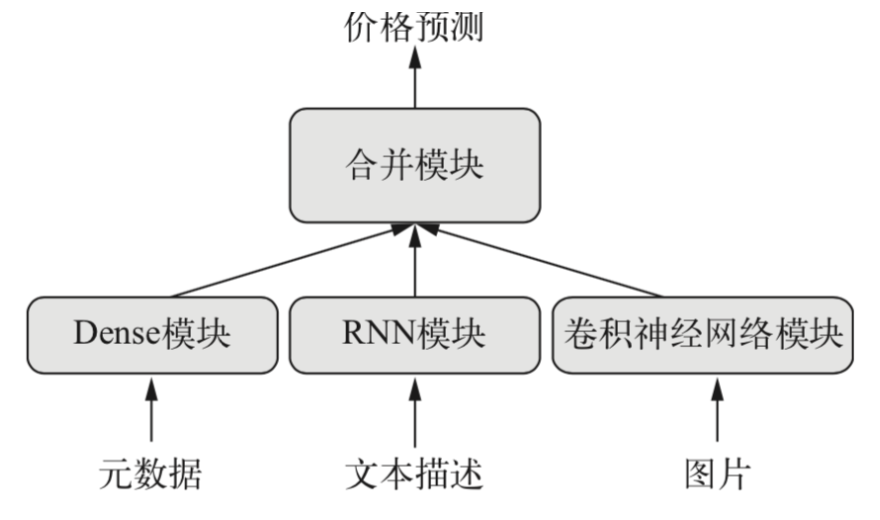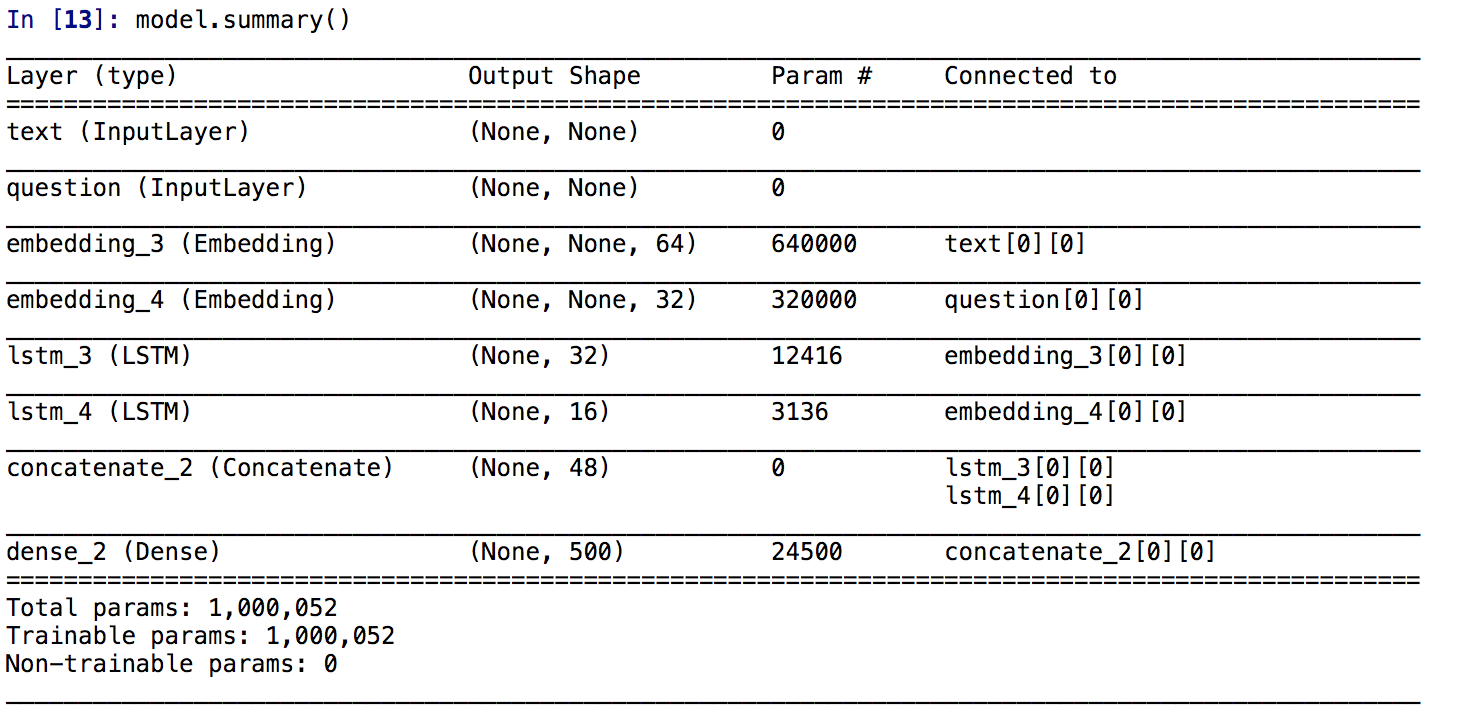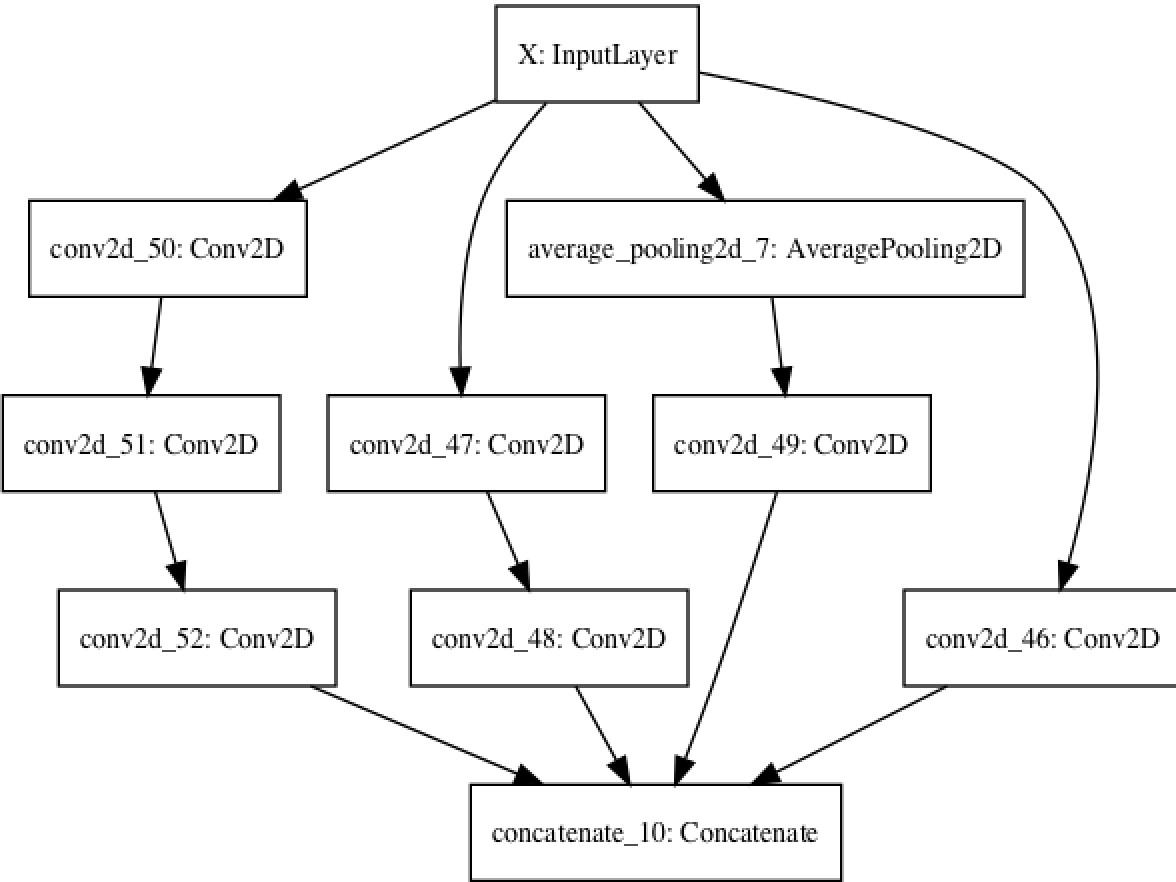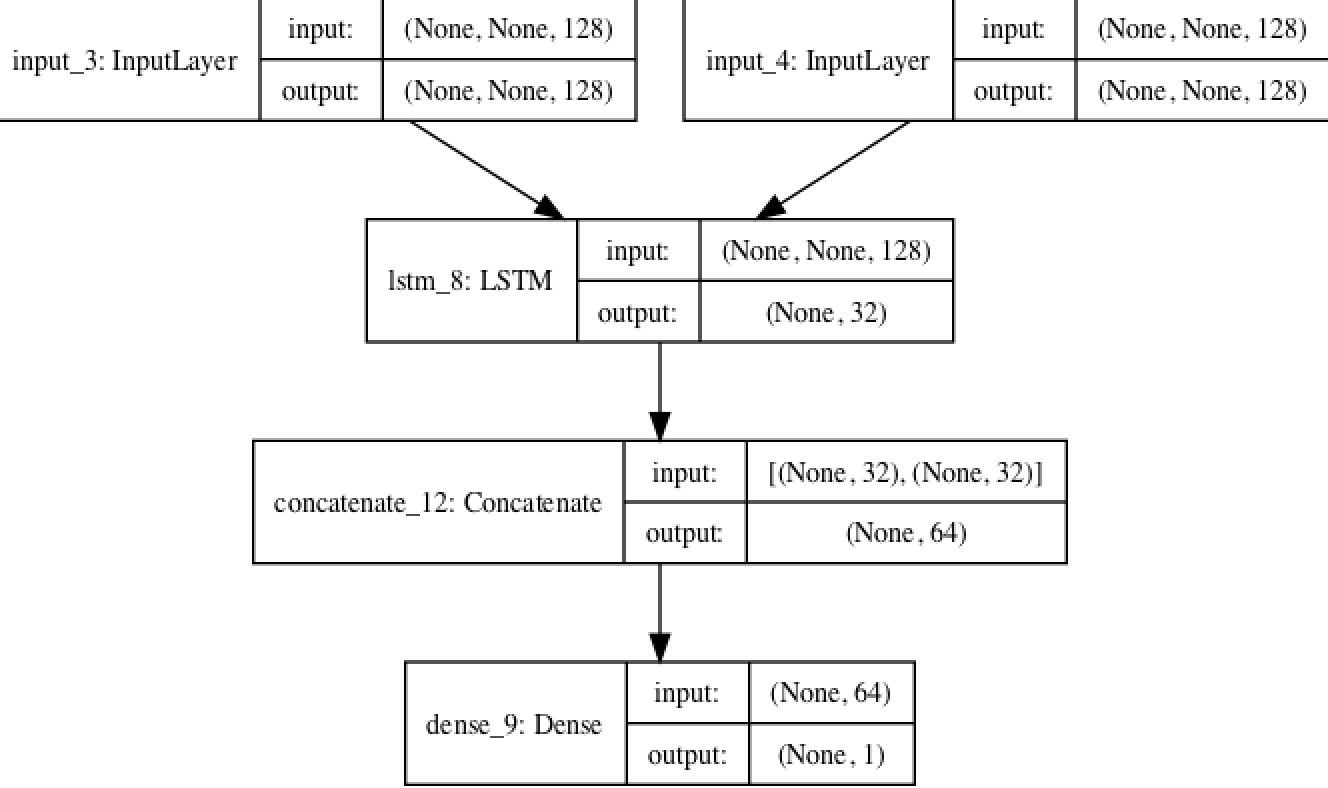keras提供了Sequential线性的模型,但是有些网络需要多个输入,有些网络有多个输出,更甚之层与层之间有内部分支,这使得网络看起来像是层构成的图,而不是线性的堆叠。有些场景需要多模态的输入,这些的输入来源于不同的数据,例如下面的例子

而有些场景是多个输出,例如给定一部小说,希望将其自动分类(比如爱情、惊悚),同时还希望预测其写作的日期。当然可以训练两个独立的模型,但由于这些属性并非是统计无关的,你可以构造一个更好的模型,进行联合训练输出想要的结果。

那么如何该用keras实现这类模型呢?
函数式API可是用于构建具有多个输入输出的模型,通常情况下,这种模型会在某一时刻用一个可以组合多个张量层将不同的输入分支合并、相加和连接等。
多输入模型
假设一个问答模型有两个输入:一个自然语言描述的问题和一个文本片段,后者提供用于回答问题的信息。然后模型要生成一个回答,在最简单的情况下,这个回答只包含一个词,可以通过对某个预定义的词表做softmax得到。
import numpy as np
from keras import layers
from keras.models import Model
from keras import Input
from keras.utils import plot_model
import keras
text_vocabulary_size = 10000
question_vocabulary_size = 10000
answer_vocabulary_size = 500
# 文本输入是一个长度可变的整数序列,注意name为可选
text_input = Input(shape=(None,), dtype='int32', name='text')
# 将输入映射为一个64的向量
embedded_text = layers.Embedding(text_vocabulary_size, 64)(text_input)
#利用lstm将向量编码为单个向量
encoded_text = layers.LSTM(32)(embedded_text)
question_input = Input(shape=(None,),dtype='int32',name='question')
embedded_question = layers.Embedding(question_vocabulary_size, 32)(question_input)
encoded_question = layers.LSTM(16)(embedded_question)
concatenated = layers.concatenate([encoded_text, encoded_question],axis=-1)
# 拼接
answer = layers.Dense(answer_vocabulary_size,activation='softmax')(concatenated)
#在模型实例化时,指定两个输入和输出
model = Model([text_input, question_input], answer)
model.compile(optimizer='rmsprop',loss='categorical_crossentropy', metrics=['acc'])
看一下模型的架构

可以通过plot_model(model,show_shapes=True,to_file='model.png')内置方法将模型的结构输出出来

接下来怎么训练这个双输入模型呢?有两个可用的API:1、向模型中输入一个由numpy组成的列表 2、输入一个将输入名称映射为numpy数组的字典
num_samples = 1000
max_length = 100
text = np.random.randint(1, text_vocabulary_size, size=(num_samples, max_length))
question = np.random.randint(1, question_vocabulary_size, size=(num_samples, max_length))
answers = np.random.randint(answer_vocabulary_size, size=(num_samples))
answers = keras.utils.to_categorical(answers, answer_vocabulary_size)
#model.fit([text, question], answers, epochs=10, batch_size=128)
model.fit({'text': text, 'question': question}, answers,epochs=10, batch_size=128)
多输出模型
一个简单的例子:输入某人的一些列社交发帖,预测这个人的年龄、性别和收入水平

代码如下:
vocabulary_size = 50000
num_income_groups = 10
posts_input = Input(shape=(None,), dtype='int32', name='posts')
embedded_posts = layers.Embedding(256, vocabulary_size)(posts_input)
x = layers.Conv1D(128, 5, activation='relu')(embedded_posts)
x = layers.MaxPooling1D(5)(x)
x = layers.Conv1D(256, 5, activation='relu')(x)
x = layers.Conv1D(256, 5, activation='relu')(x)
x = layers.MaxPooling1D(5)(x)
x = layers.Conv1D(256, 5, activation='relu')(x)
x = layers.Conv1D(256, 5, activation='relu')(x)
x = layers.GlobalMaxPooling1D()(x)
x = layers.Dense(128, activation='relu')(x)
age_prediction = layers.Dense(1, name='age')(x)
income_prediction = layers.Dense(num_income_groups,activation='softmax',name='income')(x)
gender_prediction = layers.Dense(1, activation='sigmoid', name='gender')(x)
model = Model(posts_input, [age_prediction, income_prediction, gender_prediction])
model.summary()
plot_model(model,show_shapes=True,to_file='model.png')
#model.compile(optimizer='rmsprop',
# loss=['mse', 'categorical_crossentropy', 'binary_crossentropy'])
model.compile(optimizer='rmsprop',
loss=['mse', 'categorical_crossentropy', 'binary_crossentropy'],
loss_weights=[0.25, 1., 10.])
对于这些多数出(多头)的模型该怎么训练呢?预测年龄是一个回归问题,性别是一个分类问题。为了能够进行训练我们必须将这些损失合并为单个标量。在合并不同的损失函数的时候,最简单的方法就是对所有的函数加权求和。在 Keras 中,你可以在编译时使用损失组成的列表或 字典来为不同输出指定不同损失,然后将得到的损失值相加得到一个全局损失,并在训练过程 中将这个损失最小化。注意,在严重不平衡的损失会导致模型单独针对单个损失最大的任务进行优化,而忽略了其他的任务。为了解决这一问题可以对每个损失指定一个权重。
有向无环图
利用函数是API不仅能够方便的构建多输入或多输出模型,而且可以实现内部更为复杂的拓扑结构。Keras中的神经网络可以是层组成的任意有向五环图(directed acyclic graph,DAG)
代码如下:
input_x = Input(shape=(250,250,1), dtype='float32', name='X')
branch_a = layers.Conv2D(128, 1,activation='relu', strides=2,padding='same')(input_x)
branch_b = layers.Conv2D(128, 1, activation='relu',padding='same')(input_x)
branch_b = layers.Conv2D(128, 3, activation='relu',strides=2,padding='same')(branch_b)
branch_c = layers.AveragePooling2D(3, strides=2,padding='same')(input_x)
branch_c = layers.Conv2D(128, 3, activation='relu',padding='same')(branch_c)
branch_d = layers.Conv2D(128, 1, activation='relu',padding='same')(input_x)
branch_d = layers.Conv2D(128, 3, activation='relu',padding='same')(branch_d)
branch_d = layers.Conv2D(128, 3, activation='relu', strides=2,padding='same')(branch_d)
output = layers.concatenate([branch_a, branch_b, branch_c, branch_d], axis=-1)
model = Model(input_x, output)
plot_model(model,show_shapes=True,to_file='model.png')
模型的效果图如下

权重共享
函数是API有一个重要的特性,那就是能够多次使用一层实例。如果对一个实例的层调用两次,而不是每次都实例化一个新层,那么每次调用都重复使用这个权重,这样就可以构建共享分支的模型了。据一个例子求A、B句子的相似度。A对于B等于B对于A的相似度。
lstm = layers.LSTM(32)
left_input = Input(shape=(None, 128))
left_output = lstm(left_input)
right_input = Input(shape=(None, 128))
right_output = lstm(right_input)
merged = layers.concatenate([left_output, right_output], axis=-1)
predictions = layers.Dense(1, activation='sigmoid')(merged)
model = Model([left_input, right_input], predictions)
plot_model(model,show_shapes=True,to_file='model.png')
模型如下:
